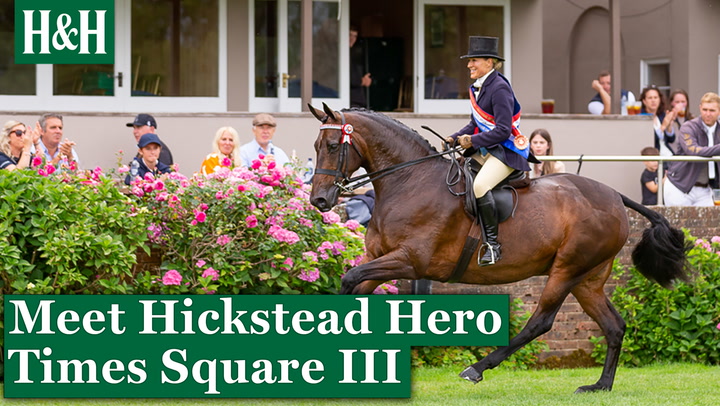Inclusion in the show ring, maintaining native pony type and the marking system were key topics at the 2024 British Show Pony Society (BSPS) judges’ conference (3 February).
More than 180 judges were at the event, at which Jane Cooper, managing director of Access and Inclusion UK, was invited to speak
 Watch the video
Watch the videoMs Cooper, whose aim is to make all feel welcome regardless of accessibility requirements, spoke about competitors and wider family members who might have additional needs. One such group of competitors judges were asked to be aware of was children with additional needs.
“Over 16 million people – one in four at any show or event – may need some kind of adjustment so they can enjoy an experience to the fullest,” she said.
“Also, people might assume that those who have requirements are only those with a physical disability or those in wheelchairs, and while it’s so important we cater for these people, they only make up 7% of the disabled population. My key message is that it doesn’t have to be a scary or complicated topic. It’s just having awareness that we are all different. We should all aim to be flexible to meet needs and requirements where we can.”
Ms Cooper advised organisers and judges to find out as much as possible about participants before a show.
“If someone does need something else, such as an adjustment to the facilities, it is helpful to find out this information beforehand,” she said.
“On speaking to parents we came up with the idea of having something similar to the sunflower lanyard scheme, which informs people that someone might struggle with certain things. For example, riders could wear a different coloured tie. We also thought it could be helpful for young people to hold a card that notes things they find tricky to be handed to the judge. There is a lot of expertise within the equestrian community and it would be really good if people could come together and make the most of this.”
BSPS chair of judges’ assessments Joanne Pybus said Ms Cooper’s advice was helpful for judges, many of whom are also show organisers, to learn more about helping those with additional needs.
“The stigma of such topics has been reduced significantly, and parents seem much more open to us acknowledging and helping children where we can,” she said. “One such situation presented was if a child doesn’t make eye contact with a judge it doesn’t necessarily mean they are being rude.”
Native pony specialists Mathew Lawrence and Lizzie Finlayson-Briant spoke about mountain and moorland (M&M) ponies, including details of breed characteristics judges should look out for when assessing them.
“Mathew and I are both so passionate about the importance of maintaining the type of our native breeds,” Ms Finlayson-Briant said. “Over the years we’ve both learnt a tremendous amount from knowledgeable enthusiasts, working with and riding for breeders and attending breed shows.
“It’s so important we keep judging our native ponies with their intended job in mind. We don’t want to end up with one universal type and in some breeds we are losing type, which is worrying. A Highland was bred for carrying stags up hills, so it should not go or be expected to go like a Connemara.”
Judges were also told of changes to the London International BSPS performance classes, and given an updated mark sheet, altered based on feedback after last year’s final.
“Marks will be awarded for each movement, rather than the show as a whole,” Ms Pybus said. “This will hopefully make the marking process less complicated. Also, during 2024 we will be introducing a new class for first ridden sports ponies and their riders, aged 12 and under.”
The marking system was discussed in a wider context with judges asked to respond to certain queries.
“It was a great way of canvassing opinions,” Ms Pybus said. “As expected, some judges preferred judging on their own, some preferred having a co-judge. Some judges prefer the current 50/50 marking split, others would like 60/40, with the native breed judges generally preferring a higher mark for type and conformation. Royal International qualifiers no longer use marks, so this was an opinion for classes at our championships and by Horse of the Year Show.”

Hopes new code of conduct will provide ‘self-regulation’ for showing

‘My dreams are the same as everyone else’: calls for more para showing opportunities

Subscribe to Horse & Hound magazine today – and enjoy unlimited website access all year round
Horse & Hound magazine, out every Thursday, is packed with all the latest news and reports, as well as interviews, specials, nostalgia, vet and training advice. Find how you can enjoy the magazine delivered to your door every week, plus options to upgrade your subscription to access our online service that brings you breaking news and reports as well as other benefits.





